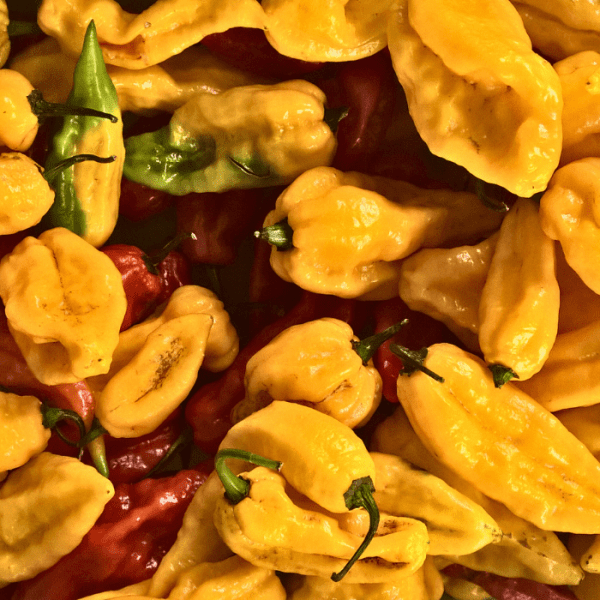Position
Full sun is crucial. Aim for at least 6 to 8 hours of direct sunlight each day. Consider growing them in containers if you have limited space or want to control their environment better.
Soil
Well-draining, fertile soil is essential. A pH level between 6.0 and 7.0 is optimal. Mix half a bag of our Volcanic Rock Dust (R25 per bag) and a bag of Superfrass (R25 per bag) for exceptional growth into your soil.
Watering
Keep the soil consistently moist but not waterlogged. Water the plants deeply, especially during dry spells.
Mulch
Apply organic mulch all year round.
Use from 2 to 5 centimetres of pine bark mulch to protect the roots from UV damage and drying out. It retains moisture and maintains an optimal pH. Do not let the mulch touch the plant stem, as it may cause infection or rot.
Re-apply every 3-4 months.
Pruning
Prune the plants to encourage bushier growth and improve airflow. Remove any dead or yellowing leaves.
Harvesting
The peppers mature in about 90-120 days after transplanting. They turn from green to a vibrant red when ripe.
Use scissors or pruning shears to cut the peppers from the plant, being careful not to damage the stems.
Wear gloves when handling Dorset Naga peppers, as they are extremely hot and can irritate the skin.
Pests and Diseases
Monitor for common pests like aphids, spider mites, and whiteflies. Use insecticidal soap or neem oil if infestations occur.
Ensure good air circulation to prevent fungal diseases. Avoid overhead watering to reduce humidity around the foliage.
Treat promptly or preferably use preventative measures by spraying with agricultural Neem Oil or Effective Microorganisms (EM Control)






